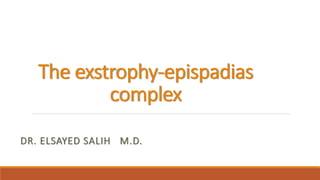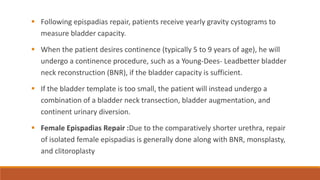This document discusses the exstrophy-epispadias complex (EEC), which includes three main presentations: epispadias, classic bladder exstrophy (CBE), and cloacal exstrophy (CE). It describes the presentations, epidemiology, risk factors, etiology, functional anatomy, associated anomalies, diagnosis, and management of EEC. The main goals of EEC reconstruction are to close the bladder and abdominal wall in CBE and CE, while addressing associated urogenital, musculoskeletal, gastrointestinal, and neurologic anomalies.




















































